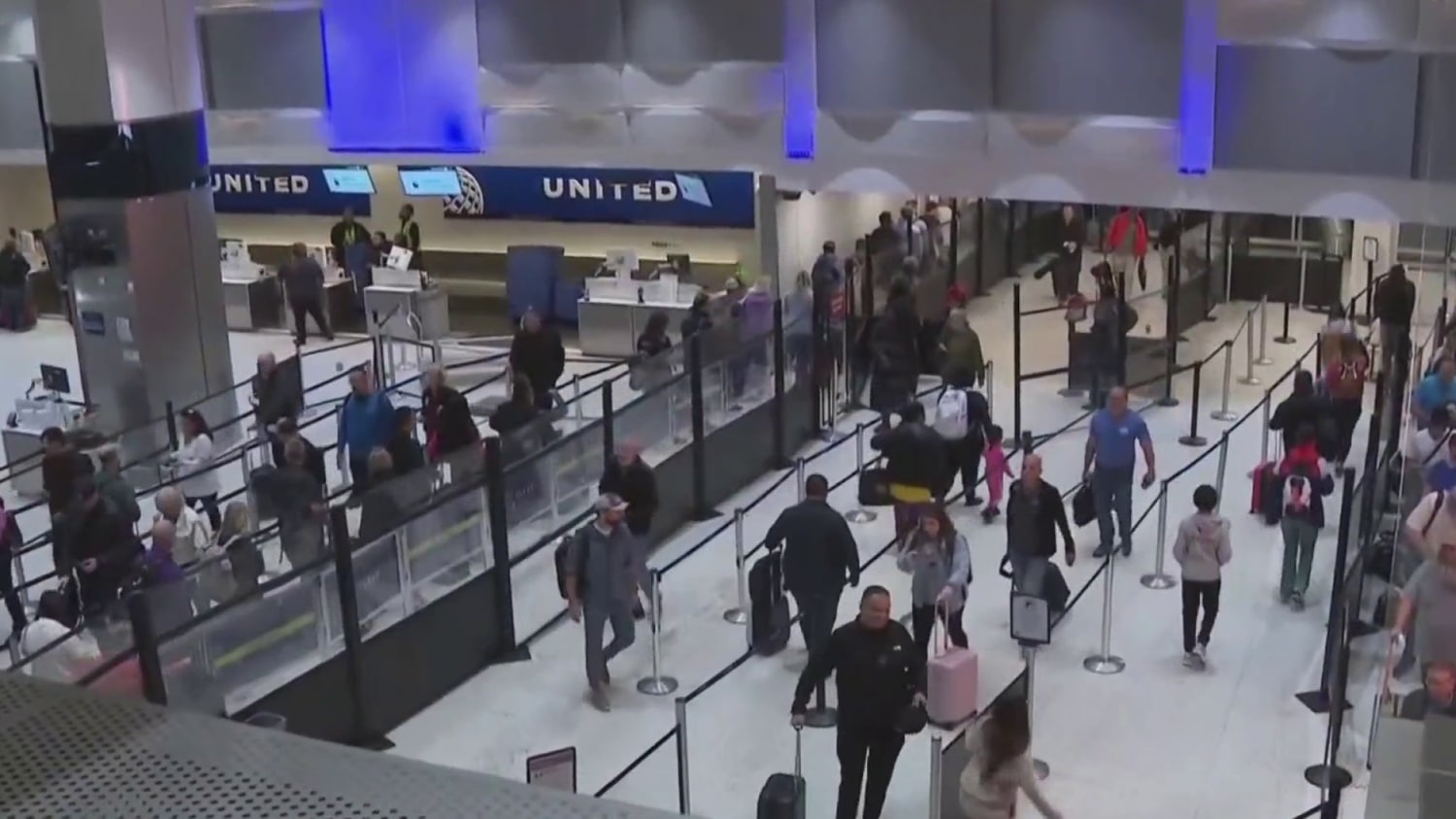As the government shutdown stretches into its second month, the Federal Aviation Administration (FAA) has announced it will reduce the number of flights in some of the nation’s busiest airspaces. The move comes amid growing concerns about staffing shortages and fatigue among air traffic controllers who have been working without pay.
Transportation Secretary Sean Duffy announced that starting this Friday, air traffic volume will be reduced by 10% at around 40 airports nationwide. Duffy stated that this measure is intended to ease the increasing burden on vital segments of the aviation system. “Our goal is to pinpoint areas of stress and implement actions to alleviate them,” he explained during a press conference.
FAA Administrator Bryan Bedford explained that the reduction in flight capacity stems from the need to address fatigue among air traffic controllers, many of whom have continued to work tirelessly despite the financial and emotional toll of the ongoing shutdown. The list of affected airports is expected to be released shortly, and the measure will be implemented gradually — beginning with a 4% reduction in flights on Friday, 5% on Saturday, and reaching the full 10% by next week.
Increasing delays and rising worries
The announcement follows a turbulent period for U.S. aviation, as thousands of passengers have already experienced disruptions caused by staffing shortages. Over the past weekend, more than 5,000 flights were delayed nationwide, with major hubs such as Chicago O’Hare, Newark Liberty, JFK, and Hartsfield-Jackson Atlanta International Airport facing the most severe impacts.
Data from FlightAware showed that on Monday alone, nearly 2,900 flights were delayed, with 70 cancellations reported. By Tuesday, cancellations had doubled to 148, while delays remained above 2,000. As of Wednesday evening, over 2,100 flights were delayed and 164 canceled across domestic and international routes. Although FlightAware does not specify causes for each delay, officials confirmed that the staffing crisis linked to the shutdown has been a major factor.
Transportation Secretary Duffy cautioned the public to anticipate “considerable interruptions” in air travel, particularly with the upcoming holiday period. During a television appearance, he clarified that the absence of compensation for air traffic controllers has created an untenable circumstance. “Should the shutdown persist until Thanksgiving, conditions will be quite challenging,” Duffy stated. “We will strive to uphold safety standards, but ensuring punctual departures and arrivals will become increasingly difficult.”
He additionally voiced apprehension that certain controllers have been compelled to undertake supplementary employment to fulfill their monetary commitments, thereby intensifying their exhaustion. “They’re doing what’s necessary to get by,” he remarked. “We desire their full attention and presence, yet we cannot disregard the fact that they’ve endured weeks without compensation.”
Tiredness and security when stressed
FAA Administrator Bedford emphasized that the agency cannot wait for the situation to deteriorate further before taking action. “We’re already seeing the effects of fatigue in the system,” he said. “Controllers have been operating under extreme stress, and it’s beginning to show.”
According to Bedford, the FAA is actively working to avert a decrease in safety levels. “We cannot overlook the indicators of stress,” he stated. “Decreasing the number of flights is a short-term yet essential action to guarantee that we safely manage the airspace.”
The shortage of air traffic controllers has been estimated at between 2,000 and 3,000 positions, a number that continues to grow as the shutdown drags on. While essential personnel are required to report for duty even without pay, the prolonged financial uncertainty has placed unprecedented pressure on the workforce.
Officials stated that more actions might be implemented if the circumstances do not get better. “We are keeping a close watch on this situation moment by moment,” Bedford commented. “Should the strain continue, we will initiate additional procedures to ensure the system’s steadiness.”
Aviation companies prepare for instability
Airlines have begun adjusting operations in anticipation of the FAA’s capacity cuts. United Airlines CEO Scott Kirby told employees that regional and domestic flights not connecting major hubs would be most affected. However, he assured that long-haul international routes and hub-to-hub flights would continue largely unaffected to protect scheduling consistency and crew logistics.
Kirby further mentioned that travelers who would rather avoid flying at this time are eligible to ask for a reimbursement, even if their specific flight has not been called off. Notwithstanding the cutbacks, United and its associated regional carriers anticipate conducting roughly 4,000 flights daily.
American Airlines issued a statement indicating that it expects minimal disruption to its customers’ travel plans, emphasizing that the majority of flights should continue as scheduled. Meanwhile, Airlines for America, an industry trade group, said it is working closely with the federal government to clarify the details of the reduction plan and minimize its impact on passengers and cargo shipments.
The Department of Transportation has been working closely with airline officials to guarantee a structured implementation of the updated flight timetable. “Our goal is an orderly deployment,” stated Bedford, mentioning that the FAA and airline leadership convened on Wednesday evening to finalize the operational specifics.
Effects on travelers and the wider financial system
The ripple effects of the FAA’s decision are expected to extend beyond passengers to include airline revenue, tourism, and cargo logistics. The aviation sector plays a critical role in maintaining the country’s economic momentum, and prolonged disruptions could have far-reaching consequences.
Travel analysts warn that if the government shutdown continues, the strain on the air travel system could worsen. Longer wait times, last-minute cancellations, and more frequent delays may become the norm, especially during peak travel periods such as Thanksgiving and Christmas.
The Transportation Security Administration (TSA) also faces mounting challenges, with agents screening an estimated 2.7 million passengers last Sunday — one of the highest volumes since the start of the shutdown. Despite their dedication, many TSA employees are also working without pay, adding to the systemic pressure on U.S. aviation infrastructure.
A plea for a solution
Secretary Duffy and Administrator Bedford emphasized that the decrease in flights is not intended as a punitive measure but rather as a protective step to ensure the system’s stability. They highlighted that the resumption of complete air traffic services is contingent upon the resolution of the shutdown and the restoration of standard funding.
When asked if normal flight capacity would resume immediately after the shutdown ends, Bedford replied cautiously: “We’ll need to see a return to controller performance levels consistent with pre-shutdown conditions before we fully ramp back up.”
As of now, no timeline has been given for when regular operations might resume, but officials remain hopeful that a swift political resolution could prevent deeper disruptions.
In the interim, travelers are advised to remain updated via airline communication platforms and prepare for potential alterations to their itineraries. Although the FAA’s actions are designed to uphold safety during difficult conditions, this event underscores the profound reliance of contemporary air travel on the individuals who oversee its intricate and rigorous operations.



